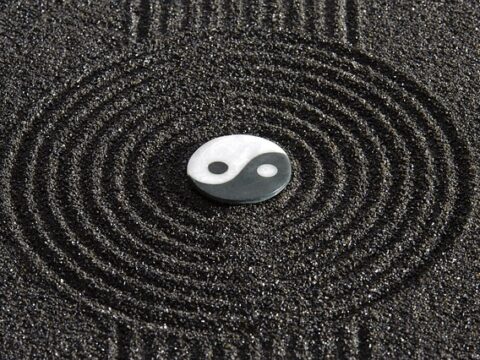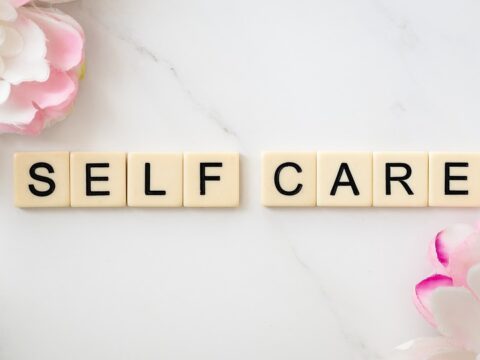Children’s yoga, what are the main benefits? One of the biggest benefits of yoga for children, is its ability to improve children’s self-esteem. Children who practice yoga have a better sense of themselves and learn to focus on their bodies rather than others. They also develop a sense of self-esteem and an awareness of their weaknesses.
Yoga also improves children’s ability to regulate their emotions. This can help them grow into responsible adults. In addition, yoga helps children improve their concentration and memory. This leads to better academic performance in school.
Another benefit of yoga is improved health. Yoga has been shown to improve children’s flexibility, strength and cardiovascular health.
Yoga also helps children learn to relax, which is not an easy skill. It takes practice, but children who practice yoga regularly will benefit from the ability to calm their minds and stay relaxed.
Podcast
Sense of achievement
Children love the sense of accomplishment they get when they master something difficult. For example, they get excited when they can master a difficult pose like the crow pose.
They want to show off their achievement and feel proud of themselves. Therefore, they will do anything to get that feeling. This helps them realise that hard work pays off and that sticking with something is worthwhile.
Another reason to try yoga is to bond with your child. Not only does it improve the bond, but the experience will be enjoyable for both of you.
The benefits of yoga for children can extend to other aspects of childcare as well. Not only does it strengthen the relationship between you and your child, but it can also improve their physical health.
Body awareness
As a physical activity, yoga teaches children to become more flexible and stronger. The different poses challenge children to use all their muscles to move from one position to another. This in turn helps them to become more aware of their body and their ability to use it properly. In addition, yoga can help children develop concentration and self-confidence.
Another benefit of children’s yoga is that it strengthens the immune system. Yoga teaches children to become more aware of their bodies and to learn self-compassion and mindfulness. Children who practice yoga regularly can be more tolerant and understanding of others. This also helps them to deal with challenges and stress in a healthy way.
Another advantage is that they can learn yoga as a fun activity. It is also an activity that children can do together. Whether you’re looking for a therapeutic yoga class or a fun activity for your kids, yoga is a great way to help children become more confident.
Through yoga, children learn to tune into their bodies and deal with their feelings through breath and movement. In an eight-week study from MIT, sixth graders who completed a mindfulness programme reported experiencing fewer negative emotions and less stress than the children who did not participate.
Benefit summary for children’s yoga
Physical benefits: Yoga is known to improve balance, strengthen the core, increase flexibility and endurance, build strength, improve posture and reduce stress. Strengthen immune system.
Emotional benefits: When you teach yoga to your children, you teach them patience, self-knowledge, meditation, mindfulness, gratitude, focus, awareness and concentration.
Spiritual benefit: By teaching your children yoga, you are teaching them a lifelong lesson about the benefits of being kind and compassionate to one another.
Life lessons: Yoga teaches children to lead active lives and take care of themselves – physically, mentally, emotionally and spiritually. This helps them become better people and gives them something to remember when they grow up.
Tips for yoga with children
Here are some tips to help children enjoy yoga and improve their health at the same time.
Keep it simple
Children often feel overwhelmed when trying to learn a new skill, or they are afraid of doing something wrong. Try to keep things simple. If they struggle with certain poses, it’s okay to take it slow. Remember that everyone is unique and no two children are the same.
Have fun
Don’t be strict. Instead, just enjoy your time together. Make sure the children enjoy themselves. Try to create a relaxed environment so they feel comfortable.
Use music
You can use music to teach the children different poses. There are many great songs to help the children relax.
Find a teacher
It is a good idea to find a teacher who has experience in teaching children’s yoga. He or she can help point you in the right direction and support you during your sessions.
Make it a family activity
It is a good idea to practise yoga as a family. This way you can teach the children that yoga is a family activity. This will make it easier for the children to see the benefits of their practice.
6 Children’s Yoga Poses
If you search for yoga postures for children, you will find a variety of different variations. Below we discuss some of these different poses. The yoga postures in general, are not specifically designed for children, so they can be challenging for some children. For this reason, it is important to modify the poses if a child has difficulty with them.
Cobra pose
Cobra pose helps children strengthen their back, chest and shoulders. It also stimulates the digestive organs. For some children, this pose is challenging but fun.
Children can hold this position for 15 to 30 seconds at a time. It also helps to stretch the lower back.
Start by lifting the upper body and head off the floor and then gently lift the chest, arms and shoulders. Breathe deeply in and out. When the stretch is complete, your thighs and buttocks should be flat on the floor.
Yoga tree pose for children
If you want to introduce your children to the benefits of yoga, the yoga tree pose is a good starting position. This relaxing, balancing pose helps children develop concentration and calmness.
Children can hold the pose for a short time before returning to the floor. As they get older, they can hold it for longer. They can also modify the pose by holding a hand or the edge of a chair.
When teaching your child this pose, you should show them the basic movements. First have your child stand with their feet hip-width apart. Then let him stretch out his arms, like branches. While doing this, imagine that the wind is blowing in their direction. Then have them lift one leg off the ground so that they can play on the opposite side of the body.
It exercises the hips and thighs and improves circulation. It is a great way to strengthen your child’s core and help them feel better about themselves. It is also a great way for your child to learn to control their breath.
You can practice this yoga pose anywhere, outdoors or indoors. Just make sure you stand on a non-slip surface. You should also remove your shoes when doing this yoga pose.
Start slowly and make sure you are not moving too fast. Try to emulate your child. This will help him learn the pose and strengthen the parent-child bond.
Lotus flower
The benefits of the lotus blossom for children are many. They offer all the benefits of lotus pose without putting strain on the unprepared body. Even if children are just learning yoga, they can practice the lotus blossom yoga poses for children from as little as one minute a day. Remember: flexibility requires practice, patience and commitment.
Lotus blossom yoga postures for children are easy to learn and are an excellent way to introduce children to yoga. This pose helps children focus on the present moment while being ambitious and planning for the future.
It can also help children improve their balance. Children should be encouraged to imagine the lotus opening up to the morning sun as they perform this pose.
Star pose
The yoga star pose for kids is a challenging but fun way to get your kids moving. In this balance pose, you lift one foot off the floor and place it on a standing ankle. Your child then stretches their arms in the air. You may want to hold your child’s hand to help them balance.
Star pose can be done lying down or standing up. Children should stretch their arms out to either side and imagine that they are stars.
As with all yoga postures, children may not be able to hold the postures perfectly, but they can try. They should also be aware that these poses require concentration.
The aim is to improve the child’s posture and balance. It also teaches them to breathe more deeply. Even if they cannot hold the star pose perfectly, it is important that they enjoy the experience.
Star pose is a classic yoga pose for children that promotes core strength and concentration. It can be done alone or with a partner. When you do this pose with a partner, it promotes social skills and coordination. It also strengthens the core and increases flexibility.
Boat pose
Boat pose is a great yoga pose for children because it helps them improve their balance and core strength. It is a challenging pose that requires children to lift their legs, hands and feet and move from side to side like a boat. This exercise is fun for children and a good way to improve their concentration and calmness.
The basic position for this yoga pose is sitting on the floor. First sit facing a friend and stretch your legs out in front of you. Gently lift one leg towards the other while keeping the other leg straight. Your partner should be able to hold your legs while you rock back and forth. This will gradually strengthen the muscles in your arms and legs.
The Child’s Posture
Child’s pose is the perfect yoga pose for yoga beginners. It encourages slow breathing and can help release tension in the hips and lower back. It also helps children to respect their body’s signals.
Child’s pose is done with the hands on the mat and the feet close together. It can be held for 30 seconds or a few minutes.
Corpse pose
Corpse pose is a powerful relaxation technique for your body and mind. You should perform it in a room without direct sunlight and in a quiet environment.
In addition to the physical and mental benefits of the posture, you should also pay attention to your breathing. Learn how to use the breath awareness technique to relieve the stress and discomfort of the pose.
This pose is a simple resting position that you can do on the floor with a yoga mat. You can also place a towel under your lower back to support your lumbar spine.




